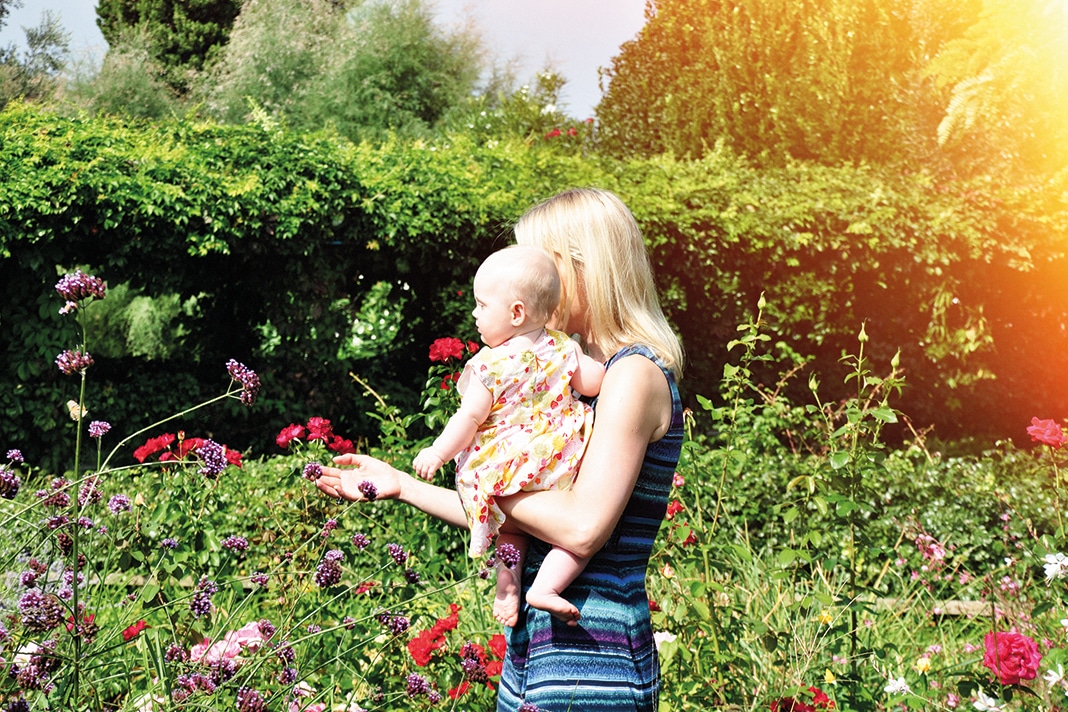Mindfulness isn’t just for adults, children and toddlers can also benefit from some simple techniques
Words Liz Lowe
Five-year-old Isabel’s* evening routine is like that of many kids her age. After dinner, she plays, watches a few minutes of TV, takes a bath and reads bedtime stories with a parent. And then she practises mindfulness meditation.
“Isabel can be quite anxious; a deep thinker,” explains her mother, Melissa*. The nightly bedtime separation from her parents was becoming increasingly difficult. “We wanted to look at ways for her to deal with her anxiety herself,” Melissa adds.
Both parents subscribe to the Headspace meditation app, which includes a selection of themed children’s meditations, visualisations and breathing exercises. They began incorporating a few minutes of these into
Isabel’s bedtime routine.
“For the first couple of days she thought it was a little weird,” says Melissa, “but by day three she was enjoying it. On day six Isabel talked through an entire three-minute meditation by herself; she remembered all of it. She requests it now.”
Simply put, mindfulness involves focusing on what’s going on both physically and mentally: it’s about experiencing the present moment, non-judgmentally and with compassion. Its popularity has risen dramatically in recent years, primarily with adults, but the benefits for children are also becoming clear.
Christiane Kerr is an experienced Montessori teacher, a yoga and mindfulness teacher and founder of Calm for Kids. Through downloads and an app, Calm for Kids offers short meditations specifically aimed at children. They also train professionals and parents wanting to introduce mindfulness or yoga practices to the children in their care.
Simple mindfulness-based exercises can have a positive effect on kids from a very young age, Christiane believes, citing “improved focus and emotional regulation” as key benefits. Schools across the country are signing up for mindfulness courses and integrating the practice into their timetable: the traditional school assembly provides the perfect opportunity.
Young people have different stresses and worries to adults, but they can be equally consuming. Arabella Tring leads mindfulness courses for children, teens and adults, and has worked with many schools. She speaks of the ways in which mindfulness can support children: “It can help them sleep, manage their emotions better, see things more clearly and help lower anxiety levels. I had one child who suffered from panic attacks and after just a few sessions they stopped.”
Headspace’s Principle Scientist, Brad Sanderson, confirms they are conducting “ongoing research” into the effects of meditation on children, noting that Headspace’s child-focussed practices have proven “really popular: they’re spoken about in our community really positively”.
So, how can parents begin introducing mindfulness to their children?
Christiane suggests parents of younger children begin ith simple breathing exercises using props such as soft toys, feathers or a Hoberman sphere. “Breath is a bit abstract,” she explains, “so how can you make the breath real? You can see it on the feather, you can feel it on
the tummy.”
Mindfulness needn’t mean sitting still and being quiet. Taking a mindful walk is something most young children enjoy.
Listening practices work well with slightly older children, and can also offer an opportunity to connect. Christiane recommends exercises such as ‘Rose Bud Thorn’, helpful for kids learning to face challenges independently, or ‘Listen and Repeat’, which allows children to feel heard.
“The most important thing when introducing mindfulness to families is that parents are practising it,” says Christiane: “Children do what you do, not what you say.”
Two months after beginning their evening meditations, Melissa reports that Isabel now “sleeps well and goes to bed easily and without worry”. And beyond the bedtime routine? “She’s happier and more light-hearted; she seems more at peace with herself.”
For little ones, the best way to introduce mindfulness is with simple breathing exercises.
Breathe together
Let your child lie on your belly and just bring attention to your breathing.
Breathing buddies
With your child lying on their back, place a soft toy on their belly. Encourage them focus on their breath as it moves teddy up and down, adding a count (in for 3, out for 3) if you wish.
Feather breathing
Place a feather between their palms. As they inhale through their nose they can raise their palms to their chin, then breathe out through their mouth to blow the feather away.
Hoberman Sphere (breathing ball)
These eye-catching spheres expand and contract, and are a useful tool to demonstrate the breathing process.
Calming music or birdsong
Simply slowing down and focusing on one sound, for example some classical music, can be relaxing for children (and parents).
Apps
Sleep Meditations for Kids is Christiane Kerr’s free app with story meditations for children. Headspace also offers meditations for children.
Breathing exercises (see above) still work well with this age group, but now is a good time to add some listening exercises and movement too.
Walk like feelings
Encourage kids to walk as if they’re happy (light-footed, loose), grumpy (tight muscles, shoulders up high) or sad (slow, droopy shoulders). This helps to connect the mind and body.
Walk like the weather
Practise walking like a gentle breeze, or a blustery gale. This is another way to explore movement in the body.
Listen and repeat
(This works best with 6-7 year olds). Spend 30 seconds listening to your child talk about an agreed topic (a favourite place or activity, perhaps). Listen and then repeat back to them what you heard.
Mindful walks
Head off on a ‘wonder walk’, with no need to rush anywhere, and stop to look at whatever grabs their interest: bugs, leaves, or berries
Rose Bud Thorn
Ask children to think about the rose of their day (the best thing that happened to them), the bud (the thing they thought had potential) and the thorn (something they found challenging).
** Read more features at www.absolutely-mama.co.uk



NO COMMENT